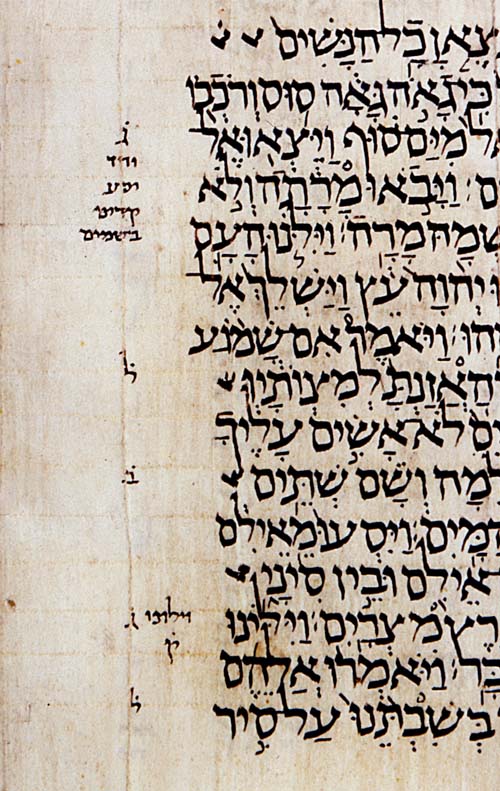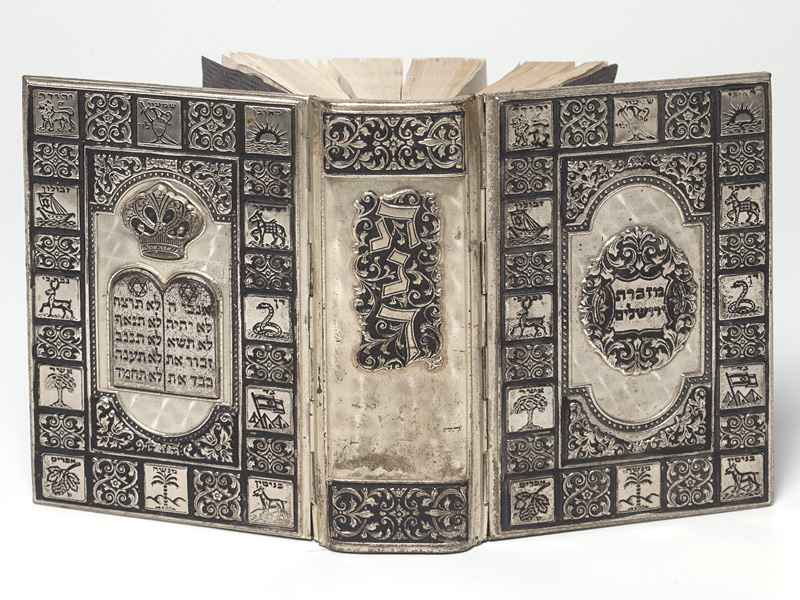|
Biblia Hebraica (Kittel)
''Biblia Hebraica'' refers primarily to the three editions of the Hebrew Bible edited by Rudolf Kittel. When referenced, Kittel's ''Biblia Hebraica'' is usually abbreviated BH, or BHK (K for Kittel). When specific editions are referred to, ''BH1'', ''BH2'' and ''BH3'' are used. ''Biblia Hebraica'' is a Latin phrase meaning Hebrew Bible, traditionally used as a title for printed editions of the Tanakh. Less commonly, ''Biblia Hebraica'' may also refer to subsequent editions in the ''Biblia Hebraica'' series which build on the work of Kittel's editions. Editions by Kittel The Old Testament scholar Rudolf Kittel from Leipzig started to develop a critical edition of the Hebrew Bible in 1901, which would later become the first of its kind. His first edition ''Biblia Hebraica edidit Rudolf Kittel'' (BH1) was published as a two-volume work in 1906 under the publisher J. C. Hinrichs in Leipzig. The second edition of Kittel's ''Biblia Hebraica'' (BH2) appeared in 1913. BH3 appeare ... [...More Info...] [...Related Items...] OR: [Wikipedia] [Google] [Baidu] |
Biblia Hebraica Stuttgartensia
The Biblia Hebraica Stuttgartensia, abbreviated as BHS or rarely BH4, is an edition of the Masoretic Text of the Hebrew Bible as preserved in the Leningrad Codex, and supplemented by masoretic and text-critical notes. It is the fourth edition in the Biblia Hebraica (Kittel), Biblia Hebraica series started by Rudolf Kittel and is published by the Deutsche Bibelgesellschaft (German Bible Society) in Stuttgart. Publishing history BHS is a revision of the third edition of the ''Biblia Hebraica'', edited by Paul Kahle, the first printed Bible based on the Leningrad Codex. The footnotes are completely revised. It originally appeared in installments, from 1968 to 1976, with the first one-volume edition in 1977; it has been reprinted many times since. The fifth reprint of the BHS was revised and redistributed in 1997. Work is currently under way at the Deutsche Bibelgesellschaft to produce a completely reworked and expanded edition in 20 volumes, known as the Biblia Hebraica Quinta ... [...More Info...] [...Related Items...] OR: [Wikipedia] [Google] [Baidu] |
Leipzig
Leipzig ( , ; Upper Saxon: ) is the most populous city in the German state of Saxony. Leipzig's population of 605,407 inhabitants (1.1 million in the larger urban zone) as of 2021 places the city as Germany's eighth most populous, as well as the second most populous city in the area of the former East Germany after (East) Berlin. Together with Halle (Saale), the city forms the polycentric Leipzig-Halle Conurbation. Between the two cities (in Schkeuditz) lies Leipzig/Halle Airport. Leipzig is located about southwest of Berlin, in the southernmost part of the North German Plain (known as Leipzig Bay), at the confluence of the White Elster River (progression: ) and two of its tributaries: the Pleiße and the Parthe. The name of the city and those of many of its boroughs are of Slavic origin. Leipzig has been a trade city since at least the time of the Holy Roman Empire. The city sits at the intersection of the Via Regia and the Via Imperii, two important medieval trad ... [...More Info...] [...Related Items...] OR: [Wikipedia] [Google] [Baidu] |
1913 Non-fiction Books
Events January * January 5 – First Balkan War: Battle of Lemnos – Greek admiral Pavlos Kountouriotis forces the Turkish fleet to retreat to its base within the Dardanelles, from which it will not venture for the rest of the war. * January 13 – Edward Carson founds the (first) Ulster Volunteer Force, by unifying several existing loyalist militias to resist home rule for Ireland. * January 23 – 1913 Ottoman coup d'état: Ismail Enver comes to power. * January – Stalin (whose first article using this name is published this month) travels to Vienna to carry out research. Until he leaves on February 16 the city is home simultaneously to him, Hitler, Trotsky and Tito alongside Berg, Freud and Jung and Ludwig and Paul Wittgenstein. February * February 1 – New York City's Grand Central Terminal, having been rebuilt, reopens as the world's largest railroad station. * February 3 – The 16th Amendment to the United States Constitution ... [...More Info...] [...Related Items...] OR: [Wikipedia] [Google] [Baidu] |
1906 Non-fiction Books
Nineteen or 19 may refer to: * 19 (number), the natural number following 18 and preceding 20 * one of the years 19 BC, AD 19, 1919, 2019 Films * ''19'' (film), a 2001 Japanese film * ''Nineteen'' (film), a 1987 science fiction film Music * 19 (band), a Japanese pop music duo Albums * ''19'' (Adele album), 2008 * ''19'', a 2003 album by Alsou * ''19'', a 2006 album by Evan Yo * ''19'', a 2018 album by MHD * ''19'', one half of the double album ''63/19'' by Kool A.D. * ''Number Nineteen'', a 1971 album by American jazz pianist Mal Waldron * ''XIX'' (EP), a 2019 EP by 1the9 Songs * "19" (song), a 1985 song by British musician Paul Hardcastle. * "Nineteen", a song by Bad4Good from the 1992 album ''Refugee'' * "Nineteen", a song by Karma to Burn from the 2001 album ''Almost Heathen''. * "Nineteen" (song), a 2007 song by American singer Billy Ray Cyrus. * "Nineteen", a song by Tegan and Sara from the 2007 album '' The Con''. * "XIX" (song), a 2014 song by Slipknot. ... [...More Info...] [...Related Items...] OR: [Wikipedia] [Google] [Baidu] |
Internet Archive
The Internet Archive is an American digital library with the stated mission of "universal access to all knowledge". It provides free public access to collections of digitized materials, including websites, software applications/games, music, movies/videos, moving images, and millions of books. In addition to its archiving function, the Archive is an activist organization, advocating a free and open Internet. , the Internet Archive holds over 35 million books and texts, 8.5 million movies, videos and TV shows, 894 thousand software programs, 14 million audio files, 4.4 million images, 2.4 million TV clips, 241 thousand concerts, and over 734 billion web pages in the Wayback Machine. The Internet Archive allows the public to upload and download digital material to its data cluster, but the bulk of its data is collected automatically by its web crawlers, which work to preserve as much of the public web as possible. Its web archiving, web archive, the Wayback Machine, contains hu ... [...More Info...] [...Related Items...] OR: [Wikipedia] [Google] [Baidu] |
Textual Variants In The Hebrew Bible
Textual variants in the Hebrew Bible manuscripts arise when a copyist makes deliberate or inadvertent alterations to the text that is being reproduced. Textual criticism of the Hebrew Bible (or Old Testament) has included study of its textual variants. Although the Masoretic Text (MT) counts as the authoritative form of the Hebrew Bible according to Rabbinic Judaism, modern scholars seeking to understand the history of the Hebrew Bible use a range of sources. These include the Greek Septuagint (LXX), the Syriac language Peshitta translation, the Samaritan Pentateuch, the Dead Sea Scrolls collection, and quotations from rabbinic manuscripts. These sources may be older than the Masoretic Text in some cases, and often differ from it. These differences have given rise to the theory that yet another text, an Urtext of the Hebrew Bible, once existed and is the source of the versions extant today. However, such an Urtext has never been found, and which of the three commonly known versio ... [...More Info...] [...Related Items...] OR: [Wikipedia] [Google] [Baidu] |
Textual Criticism Of The Hebrew Bible
Textual variants in the Hebrew Bible manuscripts arise when a copyist makes deliberate or inadvertent alterations to the text that is being reproduced. Textual criticism of the Hebrew Bible (or Old Testament) has included study of its textual variants. Although the Masoretic Text (MT) counts as the authoritative form of the Hebrew Bible according to Rabbinic Judaism, modern scholars seeking to understand the history of the Hebrew Bible use a range of sources. These include the Greek Septuagint (LXX), the Syriac language Peshitta translation, the Samaritan Pentateuch, the Dead Sea Scrolls collection, and quotations from rabbinic manuscripts. These sources may be older than the Masoretic Text in some cases, and often differ from it. These differences have given rise to the theory that yet another text, an Urtext of the Hebrew Bible, once existed and is the source of the versions extant today. However, such an Urtext has never been found, and which of the three commonly kn ... [...More Info...] [...Related Items...] OR: [Wikipedia] [Google] [Baidu] |
List Of Hebrew Bible Manuscripts
A Hebrew Bible manuscript is a handwritten copy of a portion of the text of the Hebrew Bible (Tanakh) made on papyrus, parchment, or paper, and written in the Hebrew language. (Some of the Biblical text and notations may be in Aramaic.) The oldest manuscripts were written in a form of scroll, the medieval manuscripts usually were written in a form of codex. The late manuscripts written after the 9th century use the Masoretic Text. The important manuscripts are associated with Aaron ben Asher (especially Codex Leningradensis). The earliest sources (whether oral or written) of the Hebrew Bible disappeared over time, because of the fragility of media, wars, (especially the destruction of the First and Second Temples), and other intentional destructions. As a result, the lapse of time between the original manuscripts and their surviving copies is much longer than in the case of the New Testament manuscripts. The first list of the Old Testament manuscripts in Hebrew, made by Benjamin ... [...More Info...] [...Related Items...] OR: [Wikipedia] [Google] [Baidu] |
Bombing Of Leipzig In World War II
During World War II, Leipzig was repeatedly attacked by British as well as American air raids. The most severe attack was launched by the Royal Air Force in the early hours of 4 December 1943 and claimed more than 1,800 lives. Large parts of the city center were destroyed, while factories experienced temporary shortfalls in production, had to move production facilities or even were decentralized. At the outbreak of the war, Leipzig had more than 700,000 inhabitants and was therefore the sixth-largest city of the “Greater German Reich” (including Vienna). Leipzig additionally had significance by hosting the leading trade fair of the German Empire. The Erla Maschinenwerk aircraft factory that produced Messerschmitt Bf 109 fighter planes at the three locations of Heiterblick, Abtnaundorf and Mockau were important for warfare. Additionally, Leipzig was an important railroad intersection in Germany at that time. Attacks First attacks Prior to 1942, Leipzig had been c ... [...More Info...] [...Related Items...] OR: [Wikipedia] [Google] [Baidu] |
Tanakh
The Hebrew Bible or Tanakh (;"Tanach" ''''. : ''Tānāḵh''), also known in Hebrew as Miqra (; : ''Mīqrā''), is the canonical collection of script ... [...More Info...] [...Related Items...] OR: [Wikipedia] [Google] [Baidu] |
Biblia Hebraica Quinta
The ''Biblia Hebraica Quinta Editione'', abbreviated as BHQ or rarely BH5, is the fifth edition of the '' Biblia Hebraica'' and when complete will supersede the fourth edition, the ''Biblia Hebraica Stuttgartensia'' (BHS). BHQ Fascicles and Editors The edition has been described as "international and ecumenical" as it features editors from 13 different countries and different denominations (with involvement from Catholics, Protestants and Jews). The work is currently being published in fascicles according to this release schedule: Consulting work for the Masorah is being done by Aron Dotan, Tel Aviv University, . * The first fascicle (general introduction and The Five Megilloth, part 18) was published in 2004. The books are in the same order as in the Leningrad Codex and BHS, namely Ruth, Canticles (Song of Songs), Qoheleth (Ecclesiastes), Lamentations and Esther. * The second fascicle (Ezra and Nehemiah, part 20) was published in 2006. * The third fascicle (Deuteronomy ... [...More Info...] [...Related Items...] OR: [Wikipedia] [Google] [Baidu] |
Latin
Latin (, or , ) is a classical language belonging to the Italic branch of the Indo-European languages. Latin was originally a dialect spoken in the lower Tiber area (then known as Latium) around present-day Rome, but through the power of the Roman Republic it became the dominant language in the Italian region and subsequently throughout the Roman Empire. Even after the fall of Western Rome, Latin remained the common language of international communication, science, scholarship and academia in Europe until well into the 18th century, when other regional vernaculars (including its own descendants, the Romance languages) supplanted it in common academic and political usage, and it eventually became a dead language in the modern linguistic definition. Latin is a highly inflected language, with three distinct genders (masculine, feminine, and neuter), six or seven noun cases (nominative, accusative, genitive, dative, ablative, and vocative), five declensions, four verb conjuga ... [...More Info...] [...Related Items...] OR: [Wikipedia] [Google] [Baidu] |








